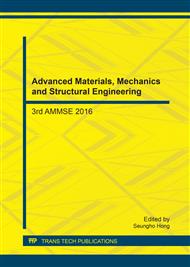p.3
p.8
p.15
p.20
p.26
p.33
p.38
p.44
An Experimental Study of Process Parameters on Friction Stir Welded Aluminum Alloy 2219 Joint Properties
Abstract:
Aluminum alloy 2219 is widely used in aerospace applications since it has a unique combination of good weldability and high specific strength. Furthermore, it can provide a high strength after heat treatment with superior properties in cryogenic environment so they have been widely used for cryogenic fuel tank of space launch vehicles. It is known that solid state welding like friction stir welding can improve the joint properties of this alloy. Friction stir welding is a solid state welding technology which two materials are welded together by the frictional heat due to the rotation of the tool. In this study, friction stir welding was performed on aluminum alloy 2219 sheets. The range of welding parameter is four rotation speeds from 350 to 800 rpm and six travel speeds from 120 to 420 mm/min. The results include the microstructural change after friction stir welding. The microstructure was characterized and material in the stirred zone experience sufficient deformation and heat input which cause the complete dynamic recrystallization. The present work represents the strength at each process condition and the optimum friction stir welding process parameters. The optimum weld efficiency obtained in this study was 76.5 %.
Info:
Periodical:
Pages:
3-7
Citation:
Online since:
February 2017
Authors:
Keywords:
Price:
Сopyright:
© 2017 Trans Tech Publications Ltd. All Rights Reserved
Share:
Citation:


